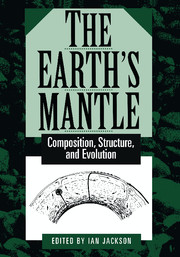Book contents
- Frontmatter
- Contents
- Chapter Outlines
- Contributors
- Dedication
- Preface
- I Accretion and Differentiation of the Earth
- 1 Composition of the Silicate Earth: Implications for Accretion and Core Formation
- 2 Early Differentiation of the Earth: An Isotopic Perspective
- 3 Primordial Solar Noble-Gas Component in the Earth: Consequences for the Origin and Evolution of the Earth and Its Atmosphere
- II Dynamics and Evolution of the Earth's Mantle
- III Structure and Mechanical Behaviour of the Modern Mantle
- Index
3 - Primordial Solar Noble-Gas Component in the Earth: Consequences for the Origin and Evolution of the Earth and Its Atmosphere
Published online by Cambridge University Press: 23 November 2009
- Frontmatter
- Contents
- Chapter Outlines
- Contributors
- Dedication
- Preface
- I Accretion and Differentiation of the Earth
- 1 Composition of the Silicate Earth: Implications for Accretion and Core Formation
- 2 Early Differentiation of the Earth: An Isotopic Perspective
- 3 Primordial Solar Noble-Gas Component in the Earth: Consequences for the Origin and Evolution of the Earth and Its Atmosphere
- II Dynamics and Evolution of the Earth's Mantle
- III Structure and Mechanical Behaviour of the Modern Mantle
- Index
Summary
Introduction
The abundances and isotopic compositions of the noble gases helium, neon, argon, krypton, and xenon trapped in mantle-derived samples provide important constraints on hypotheses concerned with the origin and evolution of the Earth's atmosphere, crust, mantle, and core. In particular, identification of the noble-gas composition of the primordial Earth is critically important for an understanding of how and when the Earth acquired its volatiles and how its atmosphere evolved. Analyses of samples derived from the mantle have been particularly helpful over the past decade or so, not only for the purpose of determining the Earth's primordial components and its outgassing history but also in relation to the identification and characterization of mantle reservoirs.
In this chapter we review the evidence concerning the primordial noble-gas components in the Earth, principally from studies of mantle-derived samples, but also drawing on information provided by noble-gas studies of meteorites, lunar samples, and the Sun. In recent years, recognition of a remarkable correlation between helium-isotope and neon-isotope systematics in mantle-derived samples has provided strong evidence for a primordial solar component within the Earth. We shall review that evidence and subsequently explore the consequences, especially in regard to the composition and abundances of the heavier noble gases in the Earth, in an attempt to improve our understanding of the origin and evolution of our planet and its atmosphere.
- Type
- Chapter
- Information
- The Earth's MantleComposition, Structure, and Evolution, pp. 159 - 188Publisher: Cambridge University PressPrint publication year: 1998
- 2
- Cited by



